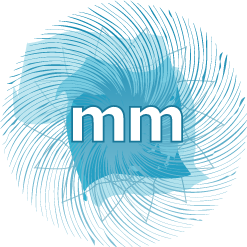Your submission's reviewers will be asked to focus on the significance of the submission's contribution, the benefit others can gain from its results, the validity of the work, and its originality. As you write your submission keep in mind the kinds of people you think might benefit from reading it. Try to make sure that the submission explains the contribution in sufficient detail for the full benefit to be extracted.
Describing your work involves not only writing good prose, but also providing a good structure that helps the reader follow the explanation. The text should be supported with figures, tables and even videos where appropriate; these should be clear and easy to understand.
Papers must adhere to the ACM MM template: http://www.acm.org/sigs/pubs/proceed/template.html and be submitted in Portable Document Format (PDF), formatted in two-column conference style. Papers that do not use the template will be rejected without review. Please use this template file (MS Word format). Since the file has the proper 2-column formatting you can write your paper by simply replacing the text with your own text. Very simple!
An Interactive Art Progam paper should include the following components:
Introduction - Concept or Problem Statement
Why are you doing this work? What do you intend to accomplish? What is the context you are working in? What is your approach? A conceptual statement is rooted in the artistic paradigm; a problem statement in the scientific paradigm. Choose from or combine these approaches.
Methods
What did you do? Why? As you describe your methods, make sure to connect them to your concept and approach. Document and motivate important design decisions. Describe algorithms.
If you developed some sort of a system or installation that uses sensors and emits sound and/or visuals or haptic feedback, focus on the mappings [Norman, The Design of Everyday Things]. How are the sensed inputs translated into experienced media stimuli? Be very clear and specific.
Make us understand what makes your work unique. Motivate your choices. If you used Max/MSP/Jitter, Processing, and/or Pure Data, that's fine. Just realize that almost everyone does this. It's not much information in itself. Let us know about the structure and function of your patches, especially with regard to how data flows through them and is transformed, and how people are connected to these flows on the input and output sides. Focus your flow charts on meaningful experiences!
Data (Results)
Who has experienced the work you have created? What is their experience? How do they respond to the stimuli you have created. Be as thorough as possible in reporting on this. Quantitative and qualitative methods for presenting and analyzing data are both valuable.
Prior Work
(This section can be after the introduction or at the end.)
- Needs and Requirements: Conditions that motivate your work.
- Ingredients / Building Blocks: Existing tools and libraries that you draw from to create your work.
- Precedents: Other work most like your own.
Discussion
What are the implications of the work you've done, your approach?
What can other artists learn from what you've done?
Develop principles that can be abstracted and generalized.
